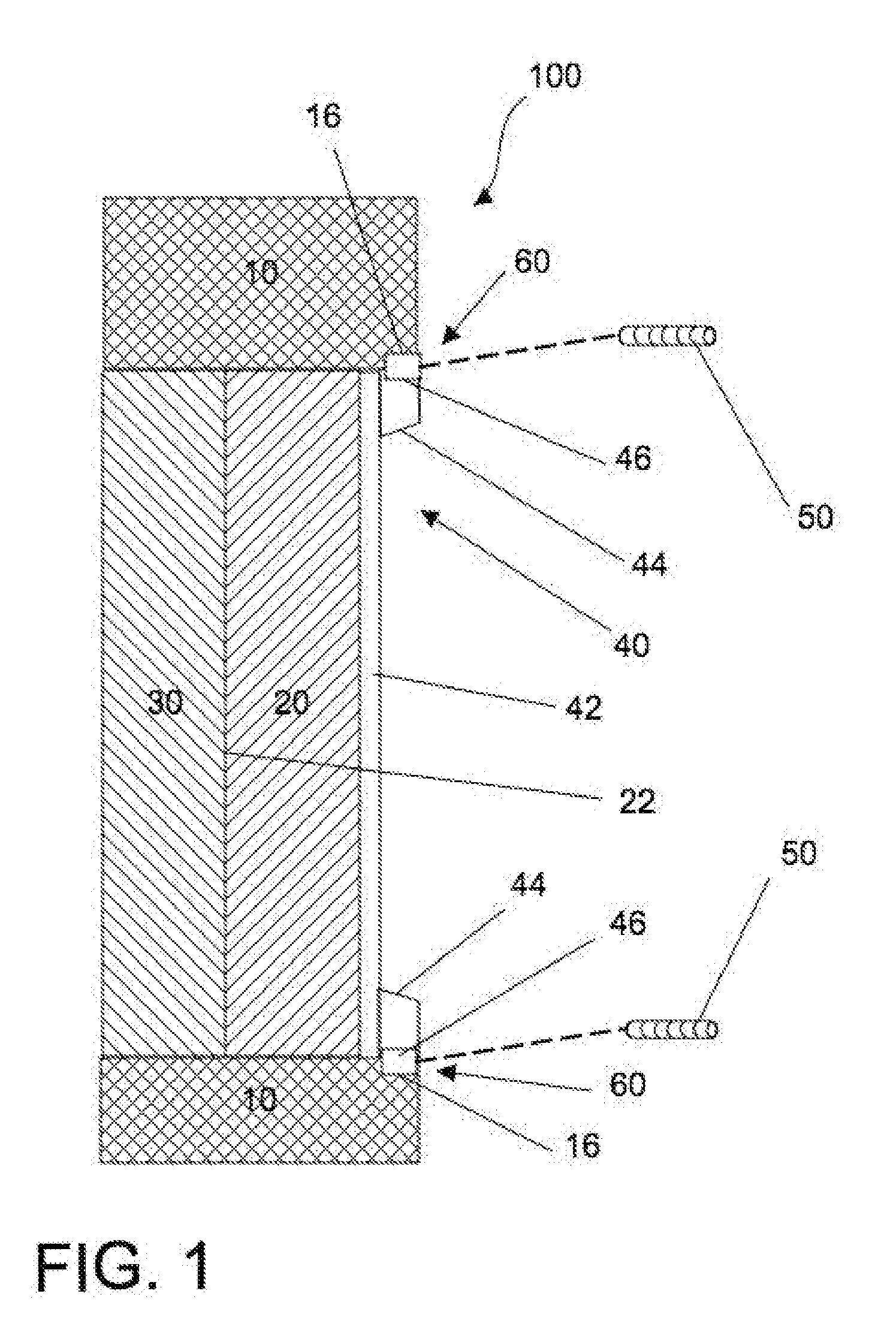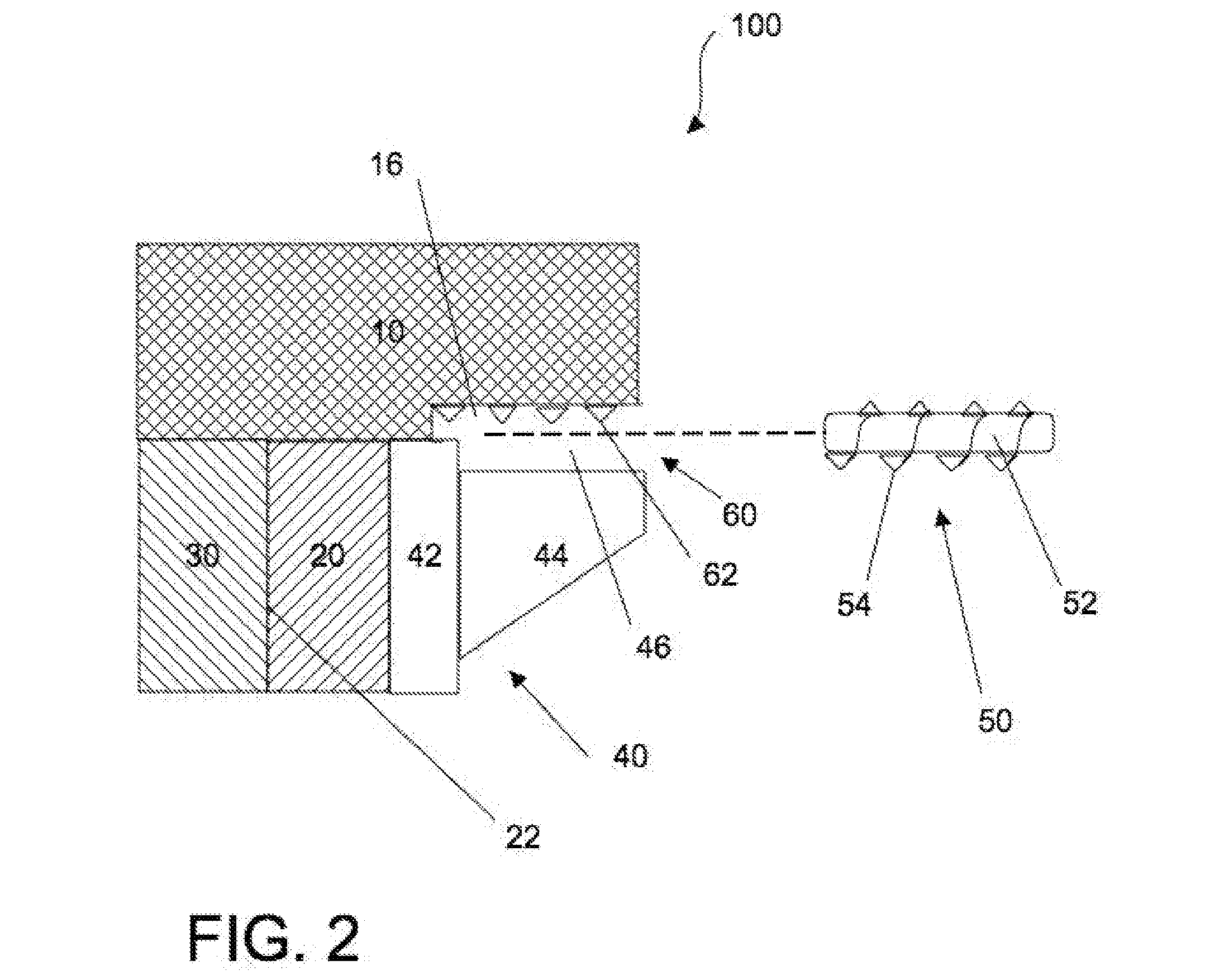Tensioning device
a technology of a stent and a stent body, which is applied in the direction of valve details, valve arrangements, slide valves, etc., can solve the problems of increased leakage, difficulty or inability to reduce the gap, and preventing the entire flow of fluid, so as to achieve the effect of reducing the gap
- Summary
- Abstract
- Description
- Claims
- Application Information
AI Technical Summary
Benefits of technology
Problems solved by technology
Method used
Image
Examples
Embodiment Construction
[0017] Referring to FIG. 1, a valve mechanism 100 according to the present invention is shown comprising a valve body 10, a first plate 20, a second plate 30, a ring member 40, and a tensioning member 50. First plate 20 and second plate 30 are proximally-located, usually with a gap 22 between.
[0018] Ring member 40 is located proximate first plate 20. As shown, ring member 40 comprises a ring body 42 and one or more attachment body 44. While described as a ring, it should be noted that ring member 40 may be of any of a number of shapes. Generally, the shape of ring member 40 approximates that of first plate 20 and may be square, rectangular, triangular, octagonal, etc. Similarly, while ring member 40 is shown as comprising distinct parts (ring body 42 and attachment body 44), it should be appreciated that ring member 40 may comprise a single element capable of performing the functions of both, as described below.
[0019] Gap 22 may be reduced or eliminated, by tensioning ring member ...
PUM
 Login to View More
Login to View More Abstract
Description
Claims
Application Information
 Login to View More
Login to View More - R&D
- Intellectual Property
- Life Sciences
- Materials
- Tech Scout
- Unparalleled Data Quality
- Higher Quality Content
- 60% Fewer Hallucinations
Browse by: Latest US Patents, China's latest patents, Technical Efficacy Thesaurus, Application Domain, Technology Topic, Popular Technical Reports.
© 2025 PatSnap. All rights reserved.Legal|Privacy policy|Modern Slavery Act Transparency Statement|Sitemap|About US| Contact US: help@patsnap.com



